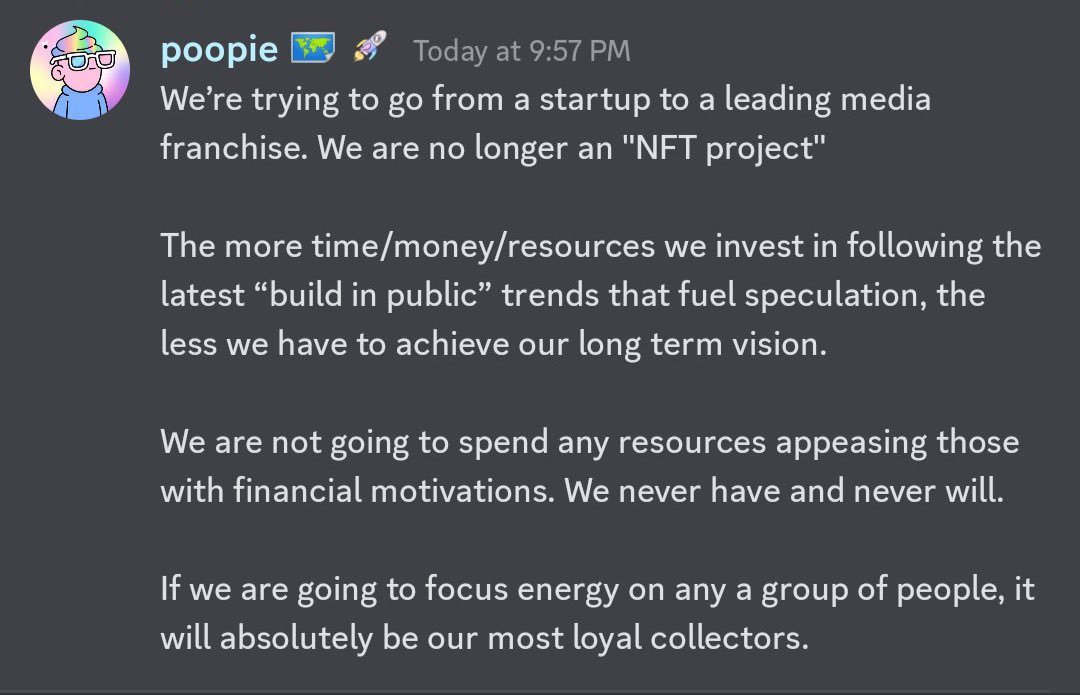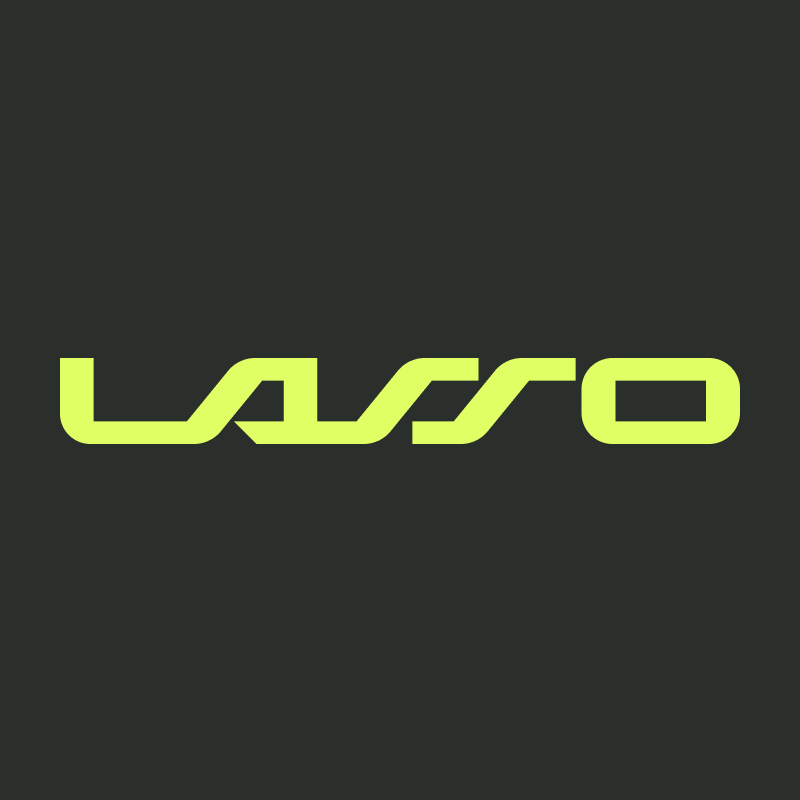"NFTs": Not the Future Terminology?
Names matter, especially for consumer technologies. “NFT” is a limiting term. At Lasso, we use “digital object."

In the sunnier NFT bull market days of 2021 and early 2022, Doodles was one of the rare collections to achieve publicity beyond the core crypto/web3 community: hiring Pharrell as “Chief Brand Officer," raising $54M in venture financing, and launching the splashy Shopify collab at SXSW that mainstreamed exclusive retail experiences in the form of "token-gated commerce."
This suggested a clear focus on branding and mainstream appeal as a media/entertainment property, not an ideologue's web3 technology showcase. And it worked. To date, despite bumps in community management along the way, the original collection alone has a GMV of 257,267 ETH on OpenSea, or nearly $450M USD at today’s prices.
So, it was not entirely surprising when the Doodles team shocked many in the NFT community by announcing on March 16th that they were "no longer an NFT project.” While the ambitions were always there, it’s easy to perceive this semantic evolution as more loaded with meaning given the challenging bear cycle that crypto/web3 is currently enduring.

The Doodles story is a fascinating one, and worthy of deeper consideration elsewhere. For our purposes: it’s a perfect case study in how the terminology of the NFT world has twisted and turned as the market has evolved. As criticism of NFTs has grown, so too have calls for a “rebrand,” including from many project founders and investors.
Is our current definition of NFTs, and even the term itself, too limited?
From JPEGs to Useful Digital Objects
The 2021 craze embodied by degens trading neon primate PFPs has stuck in the public imagination as digital objects’ only use. NFTs became a meme, something which non-believers and the “right-click-save” set relished. “What’s the point if I can just screenshot it?” is still mic-dropped in response to most positive statements about NFTs and their collectors.
These debates do little to advance the understanding or adoption of NFT infrastructure, largely because PFPs and today’s other implementations represent a limited subset of what digital objects will become.
While the digital expression of property evolves every day, the term “NFT” has not transitioned beyond this era of speculative JPEGs. It’s seen as a relic of heady zero interest rate days when the world went crazy for another trend that quickly receded, no different from Redditor meme pumps or Pokemon Go. A fad — not here to last.
NFT-erminologies
Names matter, especially for consumer technologies. Demographically, culturally, and technologically, the moment for mainstream adoption of digital goods has arrived, as we spend more of our lives in internet-mediated experiences. But: packaging is crucial.
Here's why the future of NFTs is going to be NFT-less.
— Emilios 🔮 (@emilios_eth) February 16, 2023
🧵 pic.twitter.com/7TWEWyHVBk
Digital objects are as simple as any unique item that we transfer, own, or use in digital spaces. We believe that ownable, unique digital objects will inevitably become ubiquitous in every market and geography across the globe. “How fast?” is the question.
Anyone who’s spent time in the NFT space understands why public blockchains are critical to realizing this vision. This is precisely why the “NFT” standard is so powerful: it is a fundamental building block for the next generation of the internet.
Referring to all “digital objects” as “NFTs” is limiting. It focuses on the underlying technical primitive, not on the relationship of property to its owners.
"A rose by any other name"
In the coming years, hundreds of millions of people will adopt digital objects as tools that enhance their lives. How these objects are known in the public lexicon is just as important as the way we labeled “email” and “app” in web1 and web2.
Our bet? It’s not going to be “NFTs.”
We are on the verge of redefinition, as community members from different perspectives realize where the current NFT landscape falls short and rethink its positioning. Here are some of the current candidates:
- “Assets.” Forbes says their web3 category is focused on "digital assets," encompassing both fungible and non-fungible tokens. Our take: “Assets” feels heavily financialized, and has inescapable trading connotations.
- “Collectibles.” Reddit recently exceeded 7M unique holders of their user-friendly NFTs, without using the term “NFT” at all, rather coining them “Digital Collectibles.” Other web2 platforms have followed suit: Meta's brief experiment with NFTs also utilized the "digital collectibles" branding. Our take: “Collectibles” works well for some use-cases, but sounds too trivial for others, connoting a hobby akin to sports card or stamp collecting. Ironically, "Stamps" is what Starbucks calls the NFTs that are part of its Odyssey loyalty program.
- “Items." OpenSea refers to all individually bought and sold digital objects on their platform as “items.” Our take: “Items” works fairly well because it's easy to understand, yet feels flat and gamer-like, and doesn't imply multi-faceted utility.
- “Tokens." The celebrity-voiced NFT show “Stoner Cats” aptly calls their digital objects “TOKEns.” For many projects, "tokens" is still the default shorthand. Our take: “Tokens” collides with (fungible) cryptocurrencies, and leans too much into financialization and flipping behavior.
Each of these terms fails to adequately encompass the potential of digital objects to transform how we behave and what we own in the digital realm.
At Lasso, we use “digital objects." They are both extraordinary and ordinary. Valuable and useful. Aesthetic goods that represent identity and tools with everyday utility. 6529’s Global Digital Rights Charter, a declaration of human rights in the digital sphere, refers to “digital objects” throughout — although 6529 himself argues elsewhere that "NFT" will persist — equating digital goods with the same weight and inherent ownership rights as physical ones.
Our vision for the future is to accelerate the adoption of these digital objects as extensible, everyday tools. We’ve started by building a source of truth for the ways in which today’s “NFTs” can be used by holders.
To be clear: we aren’t anti-”NFT,” and we still use the term ourselves in certain contexts. We simply believe that the acronym refers to the technical standard, and that we need a better, more human descriptor for these items if we want to accelerate their adoption.
What do you think? How do we name the future of digital ownership?
(Lasso Labs, Spring 2023)


